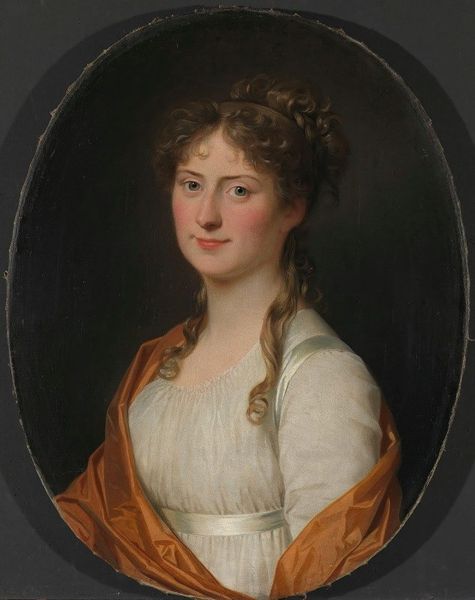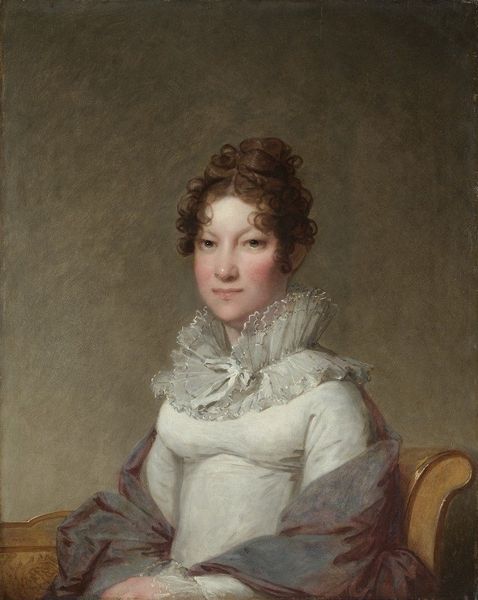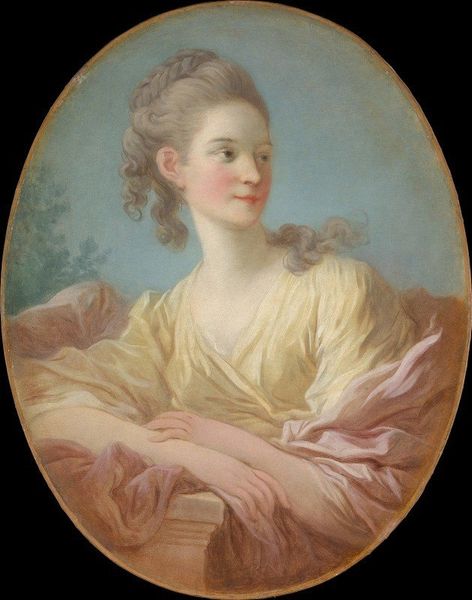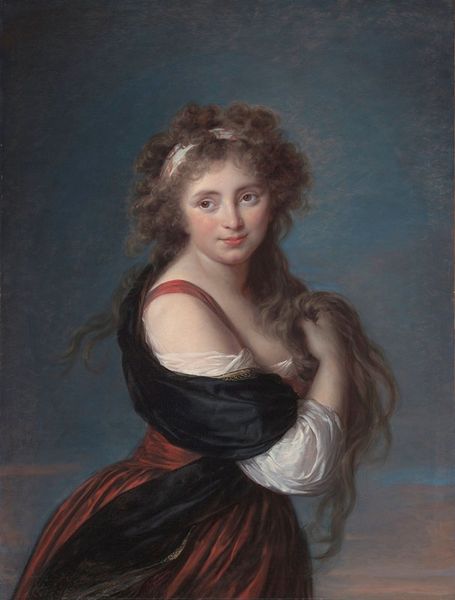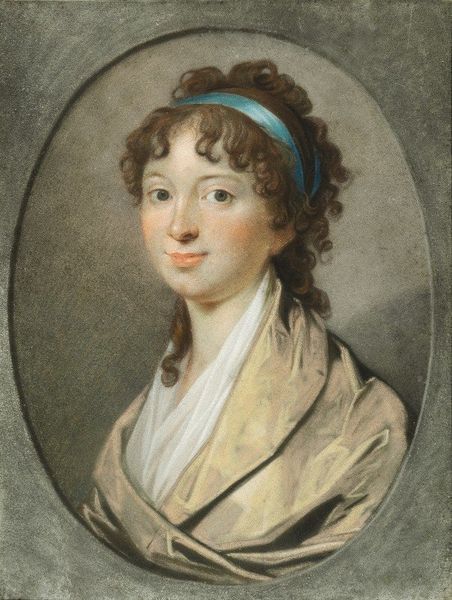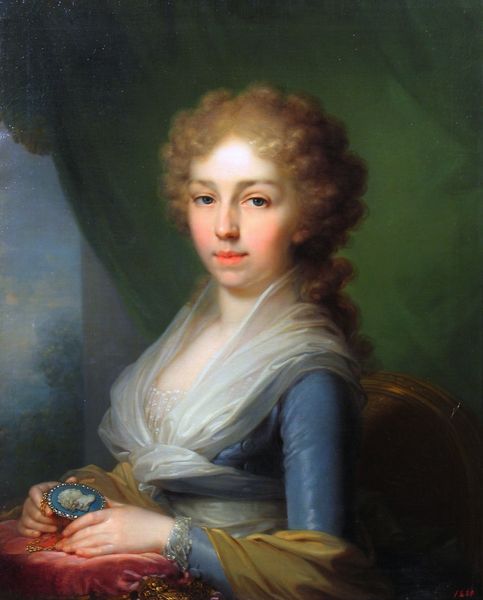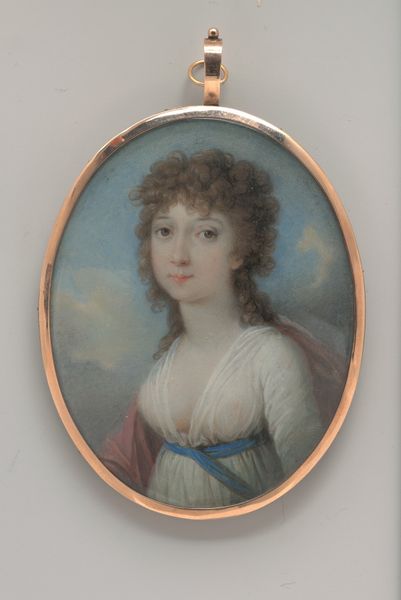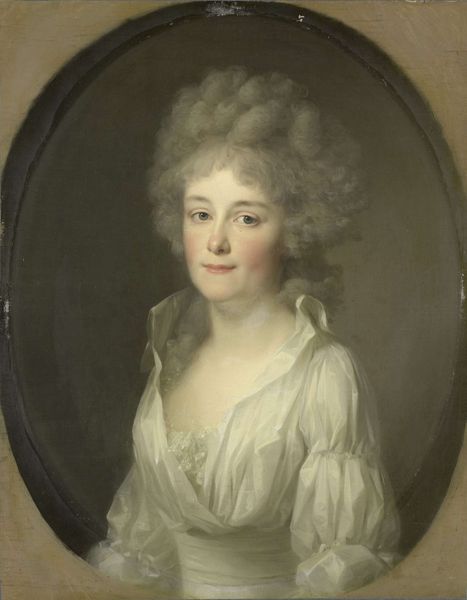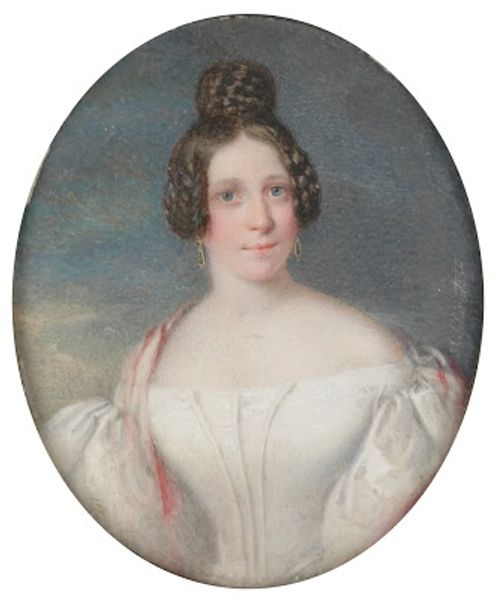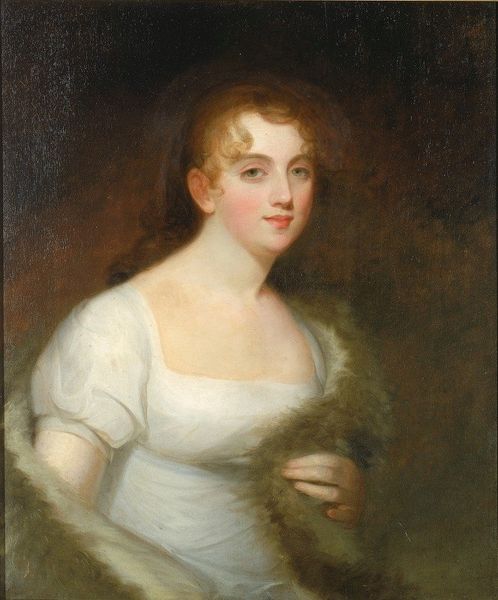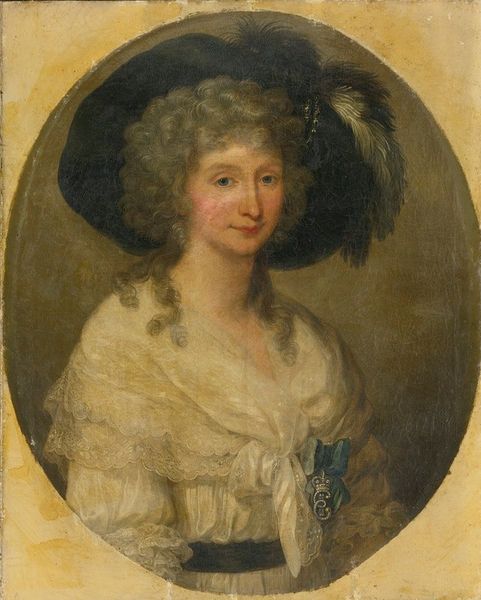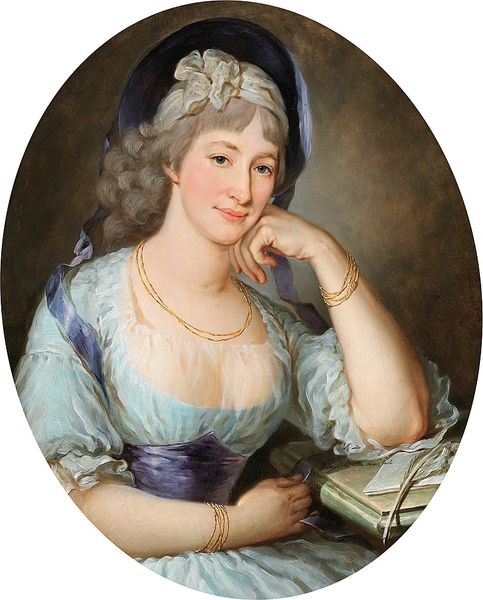
painting, oil-paint
#
portrait
#
figurative
#
neoclacissism
#
painting
#
oil-paint
#
figuration
Copyright: Public Domain: Artvee
Editor: Standing before us, we have what’s believed to be a portrait of Franciska Krasinska, Duchess of Courland, attributed to Angelica Kauffmann around 1790. The oil paint lends a softness to the subject. Curator: It's remarkable, isn't it? She almost appears to float right off the canvas. The palette is restrained, creating this ethereal, dreamlike quality that captures a sense of youthful innocence and, perhaps, a touch of melancholy. It whispers of secret stories, wouldn't you agree? Editor: Undoubtedly. Consider the context of the Duchess. Krasinska's marriage was a strategic maneuver—a common tale for women in power throughout history. We're looking at the Duchess through a Neoclassical lens, certainly. But Kauffman was one of the most prominent portraitists of her time. Does her identity shape our view of the sitter, and to what end? Curator: Absolutely. It's as though Kauffmann saw past the Duchess’s social status, peering into the woman beneath. The eyes suggest a mind keenly aware of her situation. There's defiance and an intelligence there that I find captivating. Almost a gentle challenge to the world. Editor: And what does it mean, do you think, that this portrait is "possibly" of Franciska? It invites a closer interrogation, forcing us to ask, does it even matter who we imagine she is? How might the reading of the painting itself change if we were certain? Curator: It's like gazing into a mirror, searching for pieces of ourselves, isn't it? Even the faintest glimmers of shared experience reflected in someone else's life. I always come back to that wistful look in her eye, something inherently human transcending the era and context. Editor: True. And perhaps, in its indeterminacy, this portrait of "possibly" Franciska allows more room for interpretations centered on the universal experience of women—constrained but not defeated by the realities around them. Curator: A perfect, lingering note. And isn't it what art's supposed to be doing: leading us back into ourselves, only slightly transformed.
Comments
No comments
Be the first to comment and join the conversation on the ultimate creative platform.
